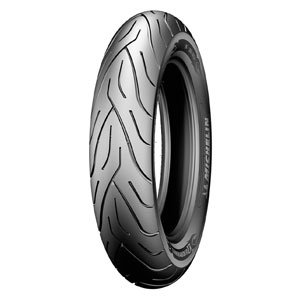9 Highest Rated Cruiser Motorcycle Tires for 2021
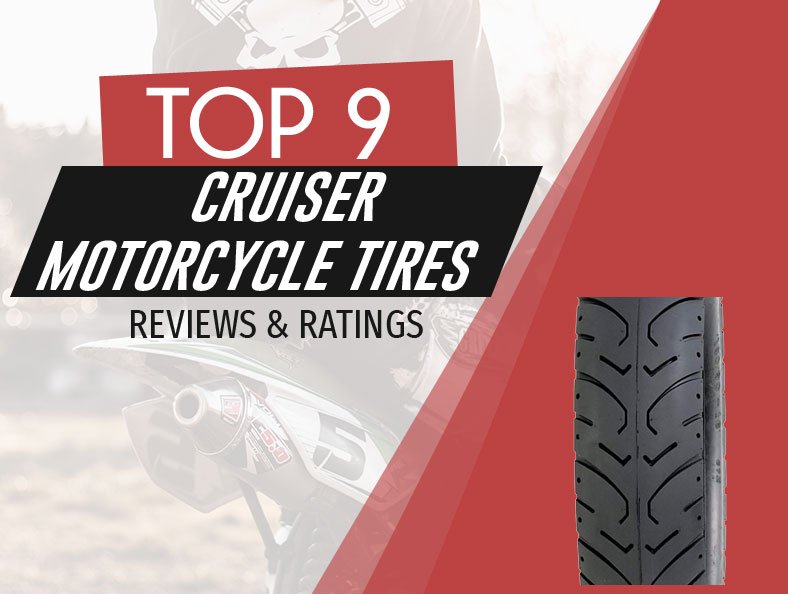
Road Racerz is proudly supported by our readers. Products purchased through links on our site may provide us a commission. Learn More
Cruisers are heavy bikes with plenty of torque and stress on the rear tires. More often than not, these motorcycles are modified for higher horsepower and even more torque.
Your bike should provide long mileage, high load rating, stability, and sharp handling. Cruisers, much like all other motorcycles, need the best tires to deliver all that.
The best models aren’t as complicated to find all as long as you know what you’re looking for. It’s essential to consider the tread, internal construction, and several other things.
To help you, we’ve reviewed some of the most wonderful cruiser motorcycle tires and included our buyer’s guide with information that can help pick one of these products.
Or see all the best tires here.
9 Top Rated Cruiser Motorcycle Tires Reviewed
| PRODUCT | FEATURES | |
|---|---|---|
Kenda 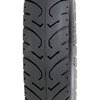 | Kenda Key Features: Comfortable, for all weather, DOT approved Rim Diameter: 18 inches | Check Price |
Bridgestone 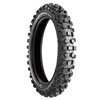 | Bridgestone Key Features: Long-lasting, provides great traction Rim Diameter: 16 inches | Check Price |
Shinko 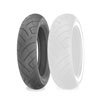 | Shinko Key Features: Great treadwear, great water displacement Rim Diameter: 21 inches | Check Price |
Metzeler 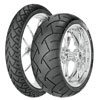 | Metzeler Key Features: Low road noise, smooth and comfortable handling Rim Diameter: 21 inches | Check Price |
MMG 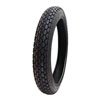 | MMG Key Features: For different weather conditions, great wear and grip Rim Diameter: 18 inches | Check Price |
Dunlop 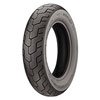 | Dunlop Key Features: Reliable traction on a wet road, stable and balanced Rim Diameter: 16 inches | Check Price |
MICHELIN 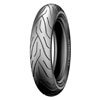 | MICHELIN Key Features: Easy to install, highly durable Rim Diameter: 19 inches | Check Price |
Bridgestone 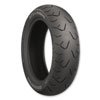 | Bridgestone Key Features: Suitable for wet weather conditions, great low-speed handling Rim Diameter: 16 inches | Check Price |
Heidenau 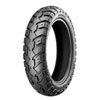 | Heidenau Key Features: Its bias construction allows durability and mileage, fot all weather conditions Rim Diameter: 18 inches | Check Price |
Kenda – Ideal for All Weather
These Kenda tires seem to be among the best options for all weather conditions. If you live in an area with unpredictable weather or you ride to different destinations often, you might want to consider Kenda.
The tread pattern is designed to handle different weather conditions. As such, they’re suitable for both dry and wet weather, rain, and light snow.
Its tubeless construction helps with handling, so the riders feel more comfortable regardless of the weather. On top of that, these are DOT approved and H-rated. It means they’re legal to use on the road anywhere in the USA.
These are suitable for mid-sized cc bikes and aren’t recommended for high load-carrying motorcycles.
The tread life seems to be a bit of a drawback, but that depends on how frequently you ride.
PROS
- Comfortable
- For all weather
- DOT approved
CONS
- Might create a loud buzzing
Bridgestone – Ideal for Hard Terrains
This rear tire is specially designed for hard terrain. You can buy it alone or together with a front one as well, depending on your needs.
This tube-type tire features 4-ply nylon casing construction for enhanced durability that’s always important for off-road models. The tread compound is another thing that adds even more to the long-life grip.
It has a tread knob shape as it’s specifically designed to provide stability and traction on uneven terrain. It fits different bikes, although it’s mostly recommended for Honda and Yamaha motorcycles.
It’s among the best choices if you’re often enjoying off-road adventures.
You need a good grip and enough traction, which is precisely what this rear tire provides.
Its rim diameter is 16 inches, so make sure to check if its construction will fit and match your ride.
PROS
- Improved low-speed handling
- Long-lasting
- Provides great traction
CONS
- Tread noise during turning
Shinko – High Mileage
This front tire is specially designed for cruisers and come in several different sizes. The 777s are made of a rubber compound that’s formulated to deliver comfort and excellent grip.
The treat designed is grooved to enhance the overall traction regardless of whether the road is wet or dry. Such friction helps with handling, especially if you’re going to use it often and on different roads.
This one is suitable for commuters and bikers who are often on the road. It’s designed to deliver high mileage and load capacity thanks to its overall construction.
It’s DOT approved, so it’s legal to use on any USA road. Plus, it’s also available as a heavy-duty version with a reinforced carcass.
With its overall diameter of 26.81 inches, this Shinko fits recommended rims of 2.50 inches.
PROS
- Great treadwear
- Great water displacement
- Comfortable
CONS
- Not the easiest to balance
Metzeler – Neutral Steering
Metzeler comes in a pack of two, including both front and rear tires, although you can buy them separately as well. These are constructed with the latest 0-degree steel belt technology. They’re built to last a long time regardless of how often you ride and in what terrain.
The tires are made to handle the loads and handling that’s characteristic to cruiser motorcycles. The front one features a rounded treat profile, providing smoother, more neutral steering. The rear one features a larger contact patch and a round treat profile for a softer ride and better traction.
It’s important to mention the unique tread pattern. It’s computer-designed with offset groove alignment to deliver equal wear characteristics and minimal road noise.
The bias construction delivers longevity and durability, while the tread pattern allows significant water displacement, enabling you to ride in the rain.
PROS
- Low road noise
- Ideal for dry and wet weather
- Smooth and comfortable handling
CONS
- Might develop a bubble in the tread
MMG – Tubetype
This tube-type tire is available as both front and rear, depending on what you need. Of course, the best performance is achieved when you use both front and back models.
The rim size is 18 inches, while its load rating is at 52. Another vital thing to mention is that the MMG is DOT approved. As such, it’s safe and legal to use across the entire United States of America.
Its max load is 440 lbs, so it’s suitable for all cruisers and similar motorcycles that fall within that category.
The special rubber compound provides excellent wear, allowing you to use MMG for an extended period.
This makes it especially suitable for commuters and other frequent riders. The compound and constructions offer an excellent grip as well.
PROS
- For different weather conditions
- Great wear and grip
- Precise stability and handling
CONS
- Not for winter
Dunlop – Excellent Balance
Dunlop rear tire comes with a great treat compound that brings a balance of grip and mileage. Its tread pattern is designed to deliver wear evacuation, which makes it ideal for riding in the rain.
Its bias-ply construction is meant to deliver load carrying capacity and maximum comfort. As a result, you’ll experience a smooth ride regardless of the road type. Another thing worth noting is the offset center groom that offers straight-line stability.
The best thing about the Dunlop D404 is that it comes with the one size property. It’s not something we often see in cruiser motorcycle tires. As such, the Dunlop D404 fits pretty much any compatible bike quite easily.
Its classic and timeless design works to deliver the best performance when it comes to touring and cruising tires.
PROS
- Reliable traction on a wet road
- One-size-fits-all design
- Stable and balanced
CONS
- Not very long-lasting
MICHELIN – Innovative
Michelin Commander II is available in a wide range of sizes that fit all kinds of cruisers. According to the manufacturer, the Commander II delivers up to 30000 miles without showing any significant decrease in traction.
One of the best things about this one is the innovative technology Michelin used in its manufacturing. The Amplified Density Technology is what helped deliver a highly dense, more rigid casing. This helps provide excellent handling and feedback regardless of the road conditions.
Its performance remains the same in wet as well as dry weather conditions. The all-new rubber compound is formulated to deliver an enhanced grip on the road even when it rains.
This is a front tire with exceptional durability. It has an innovative longitudinal tread pattern for water evacuation, which helps even more with riding in wet conditions.
PROS
- Great grip on wet and dry road
- Easy to install
- Highly durable
CONS
- A bit wider than most
Bridgestone – Good for Touring
This Bridgestone was initially designed for Japanese cruiser motorcycles. Still, after a few revamped versions, the Bridgestone Exendra G702 is now a good fit for most high-end cruisers.
This is a great option if you’re looking for stability as well as mileage. It’s designed to fit lightweight cruisers, offering low-speed handling that’s often important for this type of motorcycles.
The bias-ply construction improves the overall life span of the Bridgestone Exendra G702, allowing you to ride for thousands of miles. It won’t show any signs of wear or tear any time soon.
More precisely, you can get at least up to 20000 miles, although this largely depends on how frequently you ride and in what conditions.
You’ll notice that these are quite affordable, but don’t let that deter you from giving them a chance.
PROS
- Great low-speed handling
- Long-lasting
- Suitable for wet weather conditions
CONS
- Plenty of tread noise while turning
Heidenau – Great Traction
Heidenau 150/70B-18 dual-sports rear tire is an excellent choice if you’re looking for enhanced traction at all times. However, it’s not the most versatile model, so make sure to check if it will fit your bike.
Its bias construction allows durability and mileage. You can go for thousands of miles before the Heidenau K60 shows any signs of wear and tear. Plus, the load rating is at 739 lbs, and the speed rating is at 118 mph.
With these specifications, this one is among the best choices for off-road adventures and commuters who ride in different weather conditions. It provides equally as excellent traction on dirt surfaces as it does on smooth asphalt.
The tread life enhances its traction while providing durability and longevity regardless of the road and road conditions.
PROS
- Great traction on and off the road
- For all weather conditions
- Long-lasting
CONS
- Not the most compatible/versatile
How to Choose the Ideal Cruiser Tire for You
Choose the Right Type of Tire
Cruiser
The greatest thing about cruiser motorcycles is that they can use more options than cruiser tires. However, you probably won’t have any issues finding purpose-built models as pretty much every major manufacturer makes them.
They’re relatively new on the market, especially when compared to other types that have been on the market for years; even as long as decades.
These are specially built for this type of motorcycles. However, they’re not much different than others you can find on the market.
These are a safe choice if you want to get the best out of your bike because they’re made specifically to deliver the best performance.
Sport
These are made to deliver traction to the maximum when cornering or turning. In most cases, these have a sticky and soft tread compounds and aren’t as durable when compared to other types.
But, the excellent traction they offer helps with handling, which is especially important to commuters. They’re great for braking although they perform well in a variety of situations as well.
Sport tires are among the most popular types among riders. They give a sporty vibe, which is often why people opt for them. You’ll get a sleek look, but you might want to consider it twice due to the short life span.

Touring
Touring tires are among the best choices to deliver a long life span and high mileage. However, note that these are quite pricey, especially when compared to other types. Nonetheless, these are an investment you might want to consider.
These are considered a must-have for traveling long-distance or if you’re frequently riding across different terrain.
In most cases, these deliver some 20000 miles. They provide sufficient traction on both wet and dry roads, which is why they’re recommended for seasoned riders.
Economy
Although these aren’t as popular due to their specifications, they’re often the best choice if you’re looking for an affordable tire.
These are inexpensive, but they’re also not the best when it comes to control and traction. For this reason, they’re often recommended to people who don’t ride out when it’s rain. In other words, their performance is less-than-satisfactory on wet terrain.
Another thing worth noting is that these aren’t the most durable. They’ll show signs of wear and tear rather quickly regardless of the terrain you ride in.
They have a short life span, which is why you might want to opt for another type.
Choose the Right Size
The best way of avoiding any issues is to select the right size that your bike is meant to use. However, this doesn’t mean you’re not allowed to experiment to some extent.
Choosing the right size tends to be tricky, depending on your bike. While you may be able to select any type from sports to touring tires, you have to be careful about the size.
When it comes to size, you want to experiment within the safety standards and norms. This way, you’re not bringing yourself in danger. To find the right size, you need to know what the code on the side of its tread means.
In most cases, the manufactures use three methods to designate this information. For this reason, you’ll come across metric, standard inch, and alphanumeric.
The standard inch is the oldest system, and it’s no longer in use. From the other two, the metric system is widely accepted and used while the alphanumeric isn’t as popular.
The metric system has five main components and is printed on where you can find them on your tire’s sidewall. You need to know what each of these codes is and what it means.
- Section width – it’s the tread width measured in straight line, which is from the end to the next. In most cases, it’s a number that is three digits.
- Aspect ratio – this is the ratio of width concerning its height. The higher the ratio, the taller that the tire will be. This is usually a number that is two digits.
- Rim diameter – it’s the measurement of a rim from one side to the next. In most cases, it’s presented in inches.
- Load rating – this is a code that tells the weight that it’s designed to carry. It usually ranged from 20s to 80s, depending on the type.
- Speed rating – this alphabetic code tells you the speed that it can safely handle when adequately loaded and inflated.
It can be hard to understand this system, unless you have all the proper information from the brand manufacturer. It’s especially important to get all that info if you’re new to this world.
One thing that’s especially important to pay attention to is the rim size. The model of your choice should fit the right rim size in order to perform well. Using a wider model ends up having a poor effect on its overall performance. It might also lose some agility and acceleration.
Your best bet is to go for tires that are dual-purpose. These usually have a unique tread and are larger, offering better control/traction on both asphalt and off-road terrain.
As we said, the size must fit your motorcycle. Otherwise, you might experience several different problems with performance, traction, grip, and even durability.
There’s a reason why each bike has a recommended size, so you might want to stick to it as a safe choice.
Consider the Internal Construction
Bias Ply Construction
Bias ply tires have reinforced cords that are laid diagonally. It’s usually a 30° to 40° direction from bead to bead. Each additional ply has the cords laid at an opposite angle to the ply that’s underneath it. This creates a criss-cross pattern.
In most cases, these are 4 ply, which means that they have four layers of reinforced cords. As a result, stronger tires typically have more plies.
For heavier vehicles, you’ll find 6 ply, 8 ply and 10 ply as the strongest and most durable. The tread is created when more rubber is applied over the said plies.
The same reinforced plies support both the tread and the sidewall. This makes the bias ply construction unique, featuring specific characteristics.
Radial Construction
Radial construction tires have reinforced cords that are laid at a 90° angle. The angle goes from bead to bead, from the direction of travel. Unlike the bias ply, each additional ply in radial construction is laid in the same direction as the one that’s under it.
It’s also important to mention that all the reinforcing cords are parallel to one another. On top of that, reinforcing belts are between the tread and the radial plies.
These belts are typically made from woven strands of nylon, steel, Kevlar, and other similar materials. To create a tread, the manufacturer has to add more rubber over the belts.
In these tires, the tread and the sidewall function as two separate parts. In most cases, this construction has plenty of advantages over the bias ply construction.
Things to Consider when Buying
Carcass
The carcass is another name for the body of the tire that’s under the tread. As we mentioned, you’ll come across bias-ply and radial, which indicates how they’re constructed.
Radial models have reinforcing belts that go from bead to bead across the tread. On the other hand, bias-ply types have belts that go from bead to bead at an angle of 30° to 40°.

Tread
Tread is the part that’s in direct contact with the terrain underneath you. It’s among the most critical aspects to consider when buying a motorcycle tire, regardless of the type you’re going for.
Generally speaking, the smooth tread is best for dry and smooth surfaces such as highways and city roads. On the other hand, fat tires are more suitable for off-road terrain.
Some tread patterns are made to work better in wet weather and road conditions. However, you should keep in mind that off-road models are usually made for a wide range of surfaces. You should pick among different tread designs based on your intended use, need, and preference.
Bead
Bead is another critical part of your tire. It’s the part that mates on to the wheel. It’s usually a steel wire covered in heavy-duty rubber. It must fit well onto your tire to prevent the wheel from slipping in it.
Sidewall
The sidewall is the part that connects the bead and the tread. It’s a somewhat small part when you compare it to others, but it’s equally as important.
It adds a lot to the overall handling and load-transferring abilities. Plus, it plays a major role in figuring out the profile, height, and aspect ratio.
In most cases, a shorter sidewall means a stiffer sidewall that flexes less. What this means is that it has better handling and turning characteristics, but also worse mounting and bump absorption. The sidewall has an important role in suspension as it’s among the most critical suspension components.
Another vital thing to remember is that all the critical information about a tire is located on its sidewall. As we said, there are three ways to decode this information.
Sidewall tells a lot about the overall size, and as we mentioned, size is critical. You should always consider the size carefully as it has a huge role in its performance.
Consider sidewall as well as other components when selecting the right cruiser motorcycle tire. Make sure also to consider it when determining the right size.
Frequently Asked Questions
What's the longest-lasting cruiser motorcycle tire?
Radial construction cruiser motorcycle tire is typically more durable than a bias-ply type. However, the overall longevity depends on many different things such as construction, tread, materials, and quality of manufacturing.
If you’re struggling to find the longest-lasting model, you might want to go back to our list. The models we reviewed earlier in this article are among the most well-made and durable, depending on what you need.
How long do cruiser motorcycle tires last?
The best way to know if you should replace your tires is to follow how they look and perform over time. In most cases, those made for cruiser bikes can go for 20000 to 30000 miles without showing signs of wear and tear, but that’s not a rule, and many cannot go as far.
Generally speaking, you should replace them each five years if not earlier. Most manufacturers and experts claim that no tire can go beyond the five-year mark. On the other hand, some argue that you can extend that time to ten years, depending on the particular model and the terrain you ride in.
Read more on how long your tires should last.
Conclusion
Finding the right cruiser motorcycle tires isn’t always as complicated as people think. Surely, these are quite popular and come in a wide range of sizes, but there are a few other things to consider. For this reason, you should follow our guide and the information you got from your bike’s manufacturer.
Hopefully, you find the tires you need in our list of the cruiser motorcycle models. If not, we suggest you go back to our buyer’s guide since the information we included can help you choose among as many models.
Additional Resources







